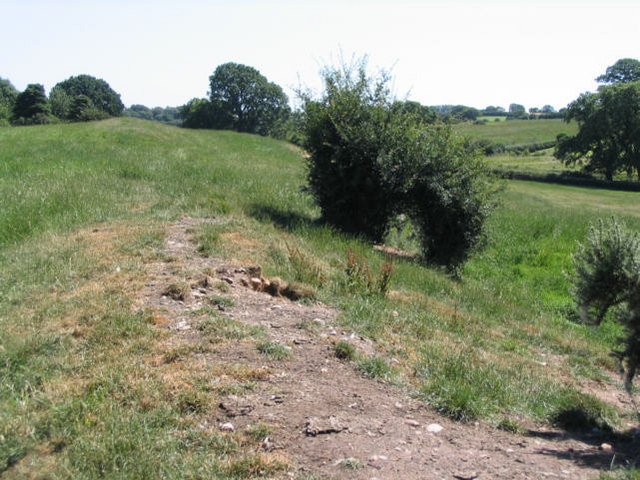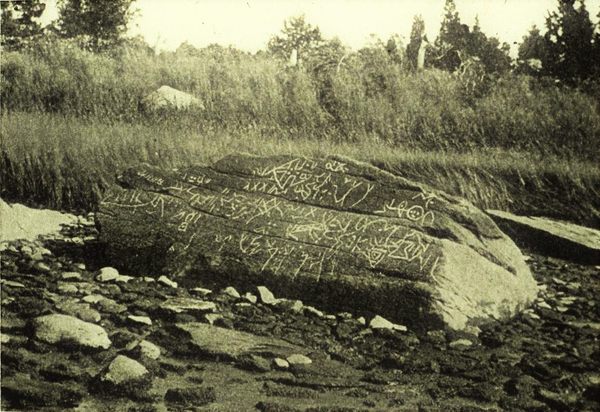- Joined
- May 12, 2019
- Messages
- 5,208
- Reaction score
- 3,455
those that weren't deployed 'cause adolf had reserved their use and nobody dared to wake him up - if rommel had been in france he would have just ordered them to the frontWhat tanks?
those that weren't deployed 'cause adolf had reserved their use and nobody dared to wake him up - if rommel had been in france he would have just ordered them to the frontWhat tanks?
What tanks?

 en.m.wikipedia.org
en.m.wikipedia.org
The guy who would like this article is @alexjack our resident Welshman.It looks like the Brits have more than Haderain Wall... It has King Offa Dyke...

Offa's Dyke - Wikipedia
en.m.wikipedia.org
Offa's Dyke (Welsh: Clawdd Offa) is a large linear earthwork that roughly follows the current border between England and Wales. The structure is named after Offa, the Anglo-Saxon king of Mercia from AD 757 until 796, who is traditionally believed to have ordered its construction.
Here is a link that shows where it is...
Kennisgeving voor omleiding
images.app.goo.gl

 en.wikipedia.org
en.wikipedia.org

Thanks for posting that 5fish. That border has always been a problem.Look at this another dyke built in Wales across from Offa Dyke... call Wat Dyke...

Wat's Dyke - Wikipedia
en.wikipedia.org
Wat's Dyke (Welsh: Clawdd Wat) is a 40-mile (64 km) earthwork running through the northern Welsh Marches from Basingwerk Abbey on the River Dee estuary, passing east of Oswestry and on to Maesbury in Shropshire, England. It runs generally parallel to Offa's Dyke, sometimes within a few yards but never more than three miles (5 km) away. It now appears insignificant, sometimes a raised hedgerow and in other places is now no more than a cropmark, the ditch long since filled in and the bank ploughed away, but originally it was a considerable construction, considered to be strategically more sophisticated than Offa's Dyke.[1] The date of construction is disputed, ranging from sub-Roman to the early ninth century.
I think @alexjack like to see this as well...
View attachment 3322

 www.atlasobscura.com
www.atlasobscura.com
 One of many old stone walls found around the southern and eastern San Francisco Bay in California. ELF/CC BY-SA 4.0
One of many old stone walls found around the southern and eastern San Francisco Bay in California. ELF/CC BY-SA 4.0
 www.atlasobscura.com
www.atlasobscura.com

don't you think that's kinda different? no barbarians (aka man) on the other side, just some innocent desertI have found a modern wall being built in Africa will it succeed? Its called the Great Green Wall trying to Keep the Great Sahara desert from advancing any further south...
https://www.greatgreenwall.org/about-great-green-wall

and zhe people who innocently trying to collect some fire wood? how the hell will they water the project?don't you think that's kinda different? no barbarans (aka man) on the other side, just some innocent desert

Great Green Wall — Donate
www.greatgreenwall.org
try reading the pageand zhe people who innocently trying to collect some fire wood? how the hell will they water the project?
ah pipe line same prob as with fuel piplines: Guy+bucket+drill
 www.greatgreenwall.org
www.greatgreenwall.org
That is growing, rarely do things grow in a desert..., just some innocent desert

 en.wikipedia.org
en.wikipedia.org
what gives you the idea i haven't done that? but i did it on foot (with some friends over a couple of years)OMG @rittmeister and @Wehrkraftzersetzer you can drive the Roman Limes of Germany... Time for a weekend drive... Look up your Roman heritage... and how many Roman ruins have you been too...
https://europe.stripes.com/travel/ruins-roman-empire-germany
The German Limes
Using the Danube, Rhine and North Sea as natural boundaries, the Romans built connecting fortified walls, called Limes Germanicus, to create territories that would help control their settlements from invasion. A 700-kilometer tourist road, called the German Limes Road, was built to allow tourists to follow the path of the limes, now UNESCO World Heritage Sites. It runs from Bad Hönningen on the banks of the Rhine through Rhineland-Palatinate, Hesse, Baden-Wurttemberg and Bavaria to Regensburg on the Danube. Along the road are several points of interest about Roman culture and history in Germany, including an original Roman fort, in Saalburg near Bad Homburg. For more information, visit the sites www.limesstrasse.de and whc.unesco.org.
Once you’ve navigated these locations, you may want to start creating a new list of Roman sites to see, perhaps in neighboring France. A good place to start would be in Nîmes; the city’s amphitheatre, La Maison Carrée, and Pont du Gard aqueduct rival exhibits in Rome … but we’ll save that for another story.
What about visiting Roman ruins like in Trier..what gives you the idea i haven't done that? but i did it on foot (with some friends over a couple of years)
